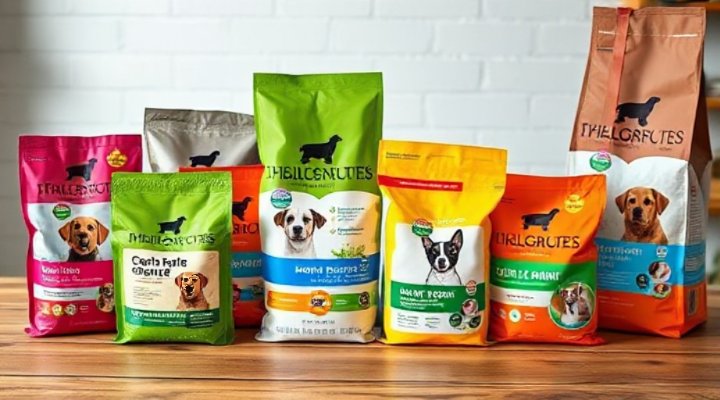When it comes to our furry companions, nothing is more important than their health and wellbeing. That’s why choosing the right dog food brands is one of the most crucial decisions you’ll make as a pet owner. In this comprehensive guide, we’ll walk you through everything you need to know about selecting the perfect nutritional plan for your dog.

Understanding Your Dog’s Nutritional Needs
Before diving into specific dog food brands, it’s essential to understand your pet’s unique nutritional requirements. Dogs, like humans, need a balanced diet containing proteins, fats, carbohydrates, vitamins, and minerals. However, the exact proportions vary depending on factors like age, breed, size, and activity level.
For instance, puppies need more protein and calories to support their growth, while senior dogs often benefit from specialized formulas that support joint health. Similarly, active breeds like Border Collies require more calories than couch-potato pups. The Canidae Dog Food for Puppies guide offers excellent insights into nutritional needs for growing dogs.

Top Dog Food Brands to Consider
Premium Options
For pet owners willing to invest in top-quality nutrition, premium dog food brands like Royal Canin and Hill’s Science Diet offer scientifically formulated options. These brands often collaborate with veterinarians and nutritionists to create breed-specific and condition-specific formulas.
Royal Canin, for example, offers specialized formulas for different breeds, sizes, and even specific health conditions. Their gastrointestinal support line is particularly helpful for dogs with sensitive stomachs.
Mid-Range Brands
Brands like Purina Pro Plan and Blue Buffalo strike a balance between quality and affordability. These dog food brands offer excellent nutritional value without the premium price tag. Blue Buffalo’s Life Protection formula, for instance, includes high-quality proteins and wholesome grains.
As highlighted in our Blue Buffalo review, their commitment to natural ingredients makes them a popular choice among health-conscious pet owners.

How to Read Dog Food Labels
Understanding dog food labels is crucial when comparing dog food brands. Here are key elements to look for:
- Protein source: Should be the first ingredient (e.g., chicken, beef, salmon)
- AAFCO statement: Ensures the food meets nutritional standards
- Guaranteed analysis: Shows minimum percentages of protein and fat
- Ingredient list: Watch for fillers like corn and by-products
The FDA provides excellent guidelines on pet food labeling that can help you make informed choices.

Special Dietary Considerations
Some dogs require special diets due to allergies, weight issues, or medical conditions. In such cases, prescription dog food brands or limited-ingredient diets might be necessary.
For dogs with food sensitivities, brands like freeze-dried options or single-protein formulas can be excellent choices. Always consult your veterinarian before making significant dietary changes.
Raw and Fresh Food Options
The rise of fresh and raw food delivery services like The Farmer’s Dog has revolutionized pet nutrition. These dog food brands offer human-grade ingredients and customized meal plans. Our Farmer’s Dog cost analysis explores whether these premium options are worth the investment.

Transitioning Between Foods
When switching dog food brands, it’s crucial to do so gradually to avoid digestive upset. The standard recommendation is to mix increasing amounts of the new food with decreasing amounts of the old food over 7-10 days.
Remember, every dog is unique. What works for one might not work for another. Pay attention to your dog’s energy levels, coat condition, and stool quality when evaluating a new food.
Final Thoughts
Choosing the right dog food brands is a significant responsibility, but it doesn’t have to be overwhelming. By understanding your dog’s needs, reading labels carefully, and consulting with your veterinarian, you can find the perfect nutritional plan for your furry friend.
For more information on specific brands, check out our best dog food brands guide or explore AVMA’s pet nutrition resources.
Related Keywords: best dog food brands, healthy dog food options, premium dog food reviews, dog nutrition guide, choosing dog food

